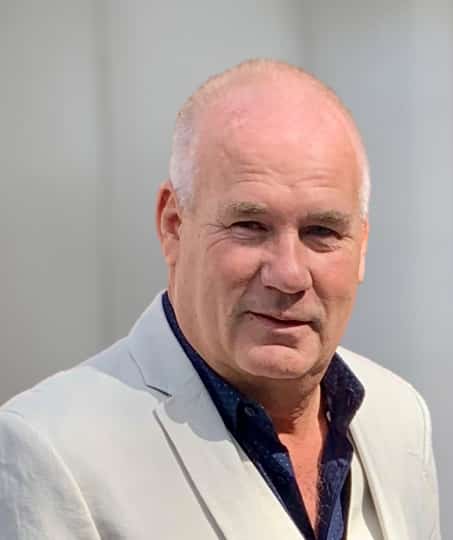AEG has a vision to empower independent businesses with the resources and tools that come with considered investment.
American Elevator Group (AEG) burst onto the U.S. elevator industry scene a little more than a year ago, and in that short time, has grown into a significant player in the independent market. The industry is witnessing an unprecedented trend of private equity investment and acquisition, of which AEG has played a major role. Recently, AEG CEO C. Mark Boelhouwer (MB) and Vice President of Marketing and Communications John Curzon (JC) shared their views on the future of the organization and the impact it is having on the industry with your author (AB).

AB: Please share with our readers how the idea to form AEG came about.
MB: AEG is the realization of my vision to bridge the significant gap between regional service companies and proprietary multinationals. My aim was to create a platform for independent companies to share resources, technology and knowledge, while retaining their independence and individualism and continuing to provide the same excellent personal, regional service they always have.
AB: Though the group is fairly new, can you share its history? Who are its instrumental players and current team members?
MB: In Spring 2020, I joined forces with investment group Arcline to lay the foundation for what was to become AEG. The first investment made was into Unitec, which was previously a part of United Technologies, alongside Otis Elevator – giving them the freedom to capitalize on their independent heritage. This was soon followed by a number of investments across the tri-state area, including Kencor Elevator, Jersey Elevator, D&D Elevator and Pride and Service Elevator. By the end of the year, AEG already featured 11 companies. In early 2021, another series of investments resulted in an additional five companies joining the group and bringing the group revenue to more than US$350 million.

I am very fortunate to have several of the skilled, experienced professionals I have worked with throughout my career join the AEG leadership team. We have people from a variety of backgrounds, with experience from working in multinationals, successful independent operations and the parts and supplier world. We have reinforced the team with significant resources in safety, finance, technology, marketing and operations. We also draw from the skills and experiences within the different company leadership teams themselves. We value the knowledge everyone brings to the table.
AB: What is the philosophy of the company?
JC: The AEG philosophy is a series of shared principles, the “Declaration of Independents,” but it is summed up as: “We want to be a force for good — that’s what drives us.” As a group of companies, it’s important for us to retain the individuality of each separate business unit, but we all subscribe to the same fundamental values and principles. These include investing in our people, putting safety first, communicating clearly and respectfully and focusing on what’s best for the customer.
AB: How many elevator companies have been acquired or invested in at this point?
MB: As of May 10, AEG featured 16 service companies operating in 21 states.
AB: Are there more acquisitions and investments planned? Is there a particular goal/strategy behind the acquisitions and investments?
MB: Our vision is to continue to grow AEG across North America and beyond, and we are always looking for outstanding partners to add to our group, but I want to clarify that the purpose of AEG’s growth is not simply about profit. We’re trying to build something that lasts. We’re here for the long haul, which is why we’ve been so selective about the partners we choose. We are creating something that will make a significant impact on the industry for many years to come.
AB: What do you think having so many elevator companies connected through AEG does for the industry and for the companies themselves?
MB: With size comes strength. As the fastest-growing, largest independent group of elevator companies, we’re already becoming a viable alternative to the proprietary services provided by the multinationals. This helps create new opportunities and encourages a new standard of service delivery.
JC: Simply collecting independent elevator companies doesn’t achieve much in itself. Our vision is to empower our businesses with the resources and tools that come from considered investment, specifically in terms of technology, training and leadership, to build true synergy.
AB: What are AEG’s short- and long-term goals?
MB: Our short-term goal is to allow all businesses to do what they do best: deliver excellent service to their customers. In the long term, however, we basically want to change the world. We want to bring a breath of fresh air to what has been a stagnant industry for many years. We believe a key part of this is to focus on people, our customers and our employees. We strive to be the best place to work and have already put several initiatives in place for achieving that.
AB: How does AEG view the health of the elevator industry in the U.S.?
JC: The elevator industry in North America is static. Meanwhile, technology is accelerating, and the way people are working and interacting is changing, especially in light of the recent pandemic. The world around us requires all companies to rethink how best to serve their customers. AEG sees change as something that empowers and invigorates its companies, not as a threat. We welcome change. The last thing we would ever want to be called is a traditional elevator business. In a technological age, we firmly believe that it is time for us as an industry to look at how we operate, how we innovate and how we keep in step with the world around us. It’s not about the elevators. It’s about connectivity, movement and ease of use. That’s the direction we’re all going in, and as a business, we embrace it.
AB: What effect does AEG see COVID having on the U.S. elevator industry as a whole and the companies under its umbrella?
MB: COVID is just one example of a highly disruptive scenario. Who knows what might come next? What this crisis has taught us is the importance of engaging with our customers to help them navigate disruptions. It can’t be done by doing business in the traditional way. Increased safety awareness and a desire for social distancing – enforced or otherwise – suggest that elevator capacity could remain reduced in the future. Without creative thinking and new applications of technology, this will become a bottleneck. We’ve got to be able to step in and engage with our customers to look beyond the elevator, to see the bigger picture of elevator management, traffic management, changed working practices and safety solutions
AB: For those in the industry who see investments and acquisitions such as AEG’s as slightly concerning or nerve wracking, what would you say?
JC: We know there has been apprehension, as well as curiosity, around AEG since its launch. When people express concern about what we’re doing, that concern typically comes from one of two places: a fear of change, or a fear of competition. Our objective is to improve overall industry standards for independents and to significantly raise the bar for what customers can expect. We’d like to challenge the complacency we’ve seen for many years, by inviting innovation into all our processes. There is huge opportunity for improvement in this market.
MB: We want to create positive disruption, and we are building momentum as we speak, but we’re also hoping that others in the industry will follow suit. We welcome the added dynamics in the industry that make us work harder to serve customers. A business that fears change or claims that they don’t have time to improve will ultimately fail. The only thing we know for certain is that tomorrow will be different from today.
AB: What roles do education and training have in AEG’s plans?
MB: I would argue that education and training are important elements in themselves, but I want to create a culture that embraces education as an investment and not an expense. Continuous training will reap greater rewards over time. With knowledge comes power, and we want to harness that power in our employees. Our people are the lifeblood of our organization, and we are committed to investing in their future with us.
Get more of Elevator World. Sign up for our free e-newsletter.









